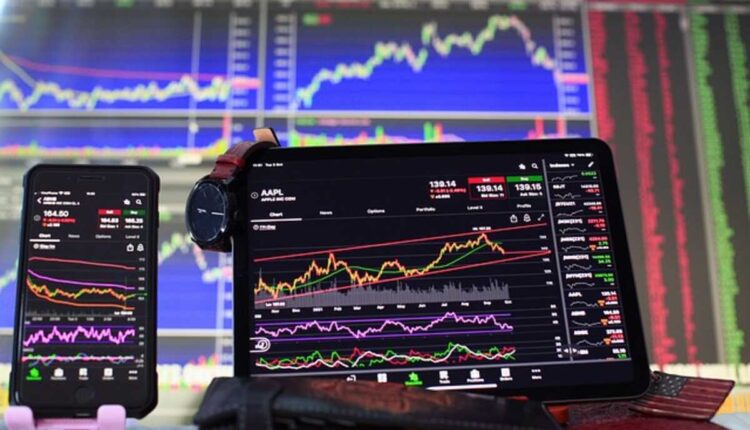The Forex market is an international decentralized marketplace for trading currencies. Currencies are paired to determine their relative values, with prices determined by capital movements and economic data across the globe. What do you consider about forex robot?
Profitable trading involves engaging in buy and sell trades on the market. To start trading successfully, open a standard brokerage account with margin privileges activated and enable margin privileges.
Currency Pairs
Traders have access to an array of currency pairs when choosing to trade them – these include majors, minors/crosses, and exotics. Selecting the ideal pair depends on a trader’s risk tolerance and trading strategy – for instance, haven currencies tend to perform best during economic turmoil while commodity currencies do better during times of growth.
Each currency pair has an exchange rate that displays how many units of its counter currency must be purchased to purchase one unit of its base currency; for instance, GBP/USD shows how many dollars must be exchanged to buy one British pound.
Exchange rates of major pairs tend to be highly liquid, making trading easy for traders and enabling them to open or close positions without much difficulty. Prices are determined by supply and demand with central banks intervening only when necessary to prevent excessive price swings in either direction.
Volatility can be affected by political events, changes to interest rates, or economic data. Therefore, traders must do their research when investing in any currency from any particular nation as this will enable them to avoid taking large positions that are susceptible to sudden price movements.
Capital Movements
Like any market, forex trading can be risky. When purchasing currency to sell later on, your hope should be that its value will rise relative to that of what was sold earlier. Unfortunately, you aren’t guaranteed a return; fees and commissions can eat into any profits that arise.
The foreign exchange market (Forex) is a decentralized network of traders and brokers worldwide, making up one of the world’s largest and most liquid markets. Key participants in the foreign exchange market include central banks, large financial institutions, and individual speculators.
Capital movements are one of the primary drivers of currency prices. When inflows surpass outflows in any country, demand for its currency rises and thus its price goes up; economic data and interest rates also play a critical role in shaping capital flows.
Investors, speculators, and traders seeking to increase returns often look for higher-yielding currencies – this strategy is known as carrying trade. For instance, if the Euro was trading below its Australian Dollar value then traders might prefer shorting euros while buying Aussie dollars, to take advantage of increased yield which offsets transaction costs such as spread.
Pip Value
Pip value is one of the cornerstones of forex trading. Pip value refers to the amount that can be earned or lost per movement in a currency pair trade; this figure depends on factors like its size, number of base units traded, and current exchange rates.
Pip stands for “price increment”, the difference between the bid and asks prices of a forex pair, typically equivalent to one point (0.0001). Most currency pairs use four decimal places for quotation purposes (or five for JPY); such additional increments are known as pipettes and are worth 0.0010 per movement of currency pair price quotes.
Calculating pip values depends on both the currency pair in question and your account’s base currency – for instance AUD, CAD, EUR, GBP, NZD, or USD). A standard pip move usually has a fixed value within your currency account’s accounts: each 100,000 unit trade will generate one pip in either profit or loss resulting in one pip move and costing you $10 of profit/loss per trade.
Margin
Forex margin is the amount of capital required to open and maintain a position, acting as collateral and increasing the leverage of trades. Brokers determine margin requirements based on client credit profiles and risk tolerance; traders typically open positions using margin loans.
Buy securities that you cannot buy outright using cash from your trading account using borrowed funds from your broker by opening up a margin account, which differs from traditional brokerage accounts.
If the market moves against you, your broker may close your positions until your used margin level returns to normal – this is known as a margin call and can be quite stressful for novice traders. To prevent margin calls, regularly monitor your account balance and use risk management tools such as stop losses. Likewise, avoid opening positions that require high margins as this will help prevent sudden price spikes or drops which could potentially trigger margin calls.
Trading
Forex trading entails buying and selling currency pairs to profit from any price fluctuations between them. Most traders choose currencies they believe will appreciate while selling those they think will depreciate on the spot market, where traders have real-time opportunities to either make or lose money depending on real-time price changes.
The forex market operates globally 24 hours per day, five and a half days each week. As the largest and most liquid market worldwide, its traders include governments and central banks as well as commercial companies, financial institutions, and individual investors.
Forex traders may also engage in forward market trades, in which they agree to transact at a specified future date. Such trades help minimize currency trading risk as funds do not exchange hands at any point in time. Just as with other market trades, forex trading follows its own specific set of rules: the bid-ask spread. This difference between maximum buyer demand for one currency pair compared with minimum seller willingness is what defines Forex’s bid-ask spread.

